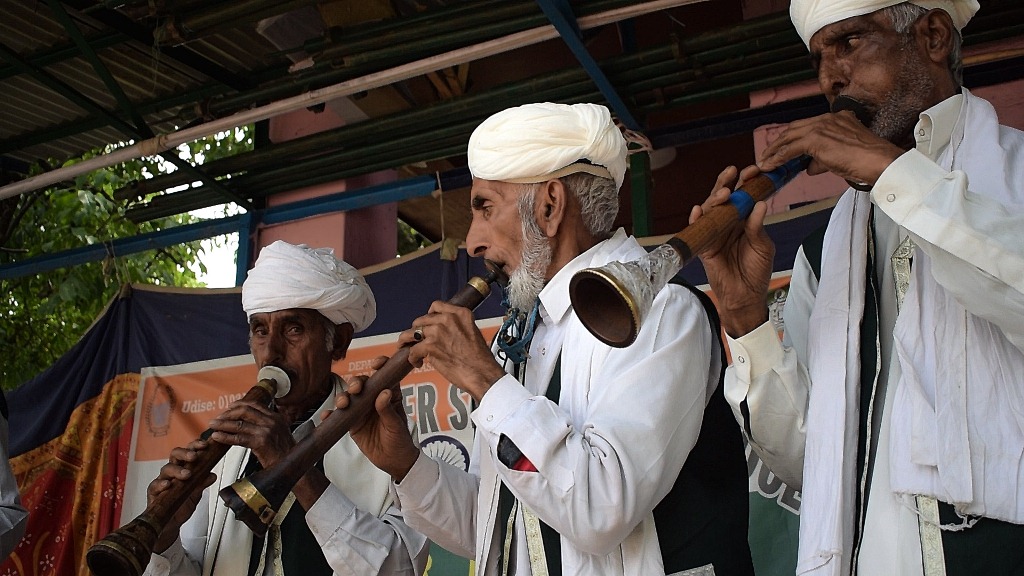As part of Kashmir’s syncretic culture, an obsolete show is springing back due to a showman’s resilient act.
A veteran’s Balpora Budgam home is a warehouse of wit, wisdom and a bit of worry. His concern is the curtain-down plight of his play, but he’s fighting for its revival despite the contemporary change sweeping and scraping the old means of entertainment in the valley.
The seasoned satirist is quite lucid about a dramatic shift that snatched limelight from his life and reduced his tribe to some forgotten funnymen with furrowed features. But appearances can be deceptive, and in his amusing world, they can be comments too. This very realization has prompted the performer of yore to step up as a mentor of his troupe. The motive remains to revive Kashmir’s traditional folk theatre.
Ghulam Mohiuddin aka Aajiz—the miracle—defies the image of a cultural crusader. The septuagenarian’s rib-tickling sarcasm is intact, so is his sanguine spirit of life. As a showman with heart and hope, he’s rewriting the script of his play largely dismissed as a ‘theatre of absurd’. He’s mindful of the lost public interest in the kosher folk-play that once uplifted the gloom of the grassroots.
“I’m a third-generation, award-winning Baand artist of Sufiyana clan,” says Aijaz with a wry smile. “My grandfather introduced me to this art-form. I’m only trying to guard its existence.”
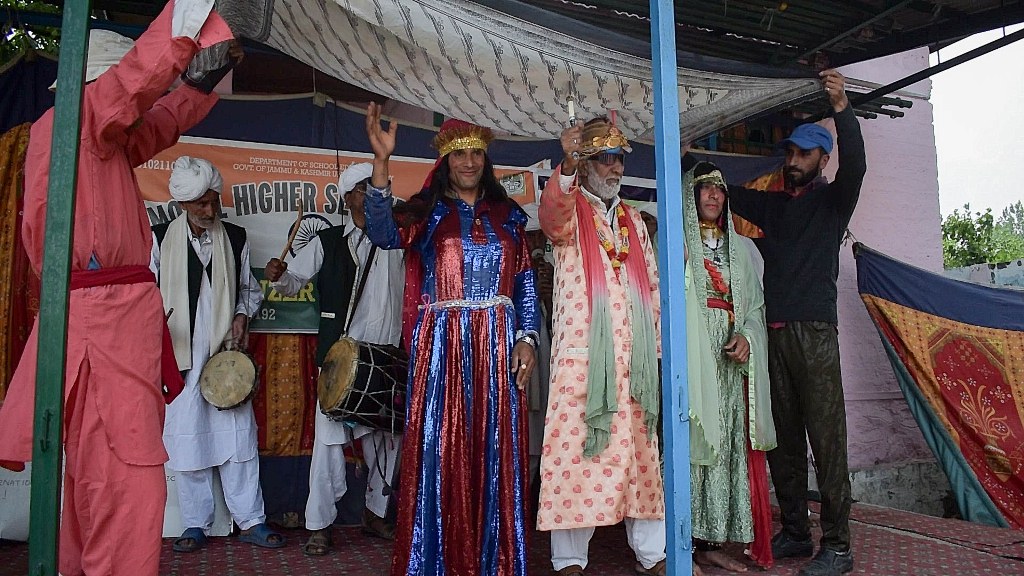
The band show. [FPK Photo/Muzammil Bashir.]
In his heydays, the folk-artist would dress up in a colourful costume along with his class called Maskhars to perform the culturally-rich Baand-e-Pather.
To perform the traditional skit in front of native cheerleaders, Baands would dress up as men and women. They would move from place to place like gypsies, with their cultural chronicles and community comments based on socio-economic and even political issues in an exuberant manner.
“When there was no media,” continues Aijaz, “Baand-e-Pather would act as a bridge of information highlighting the issues to common people as well as the ruling ones with pure entertainment.”
The artists would perform the play sarcastically by including traditional Kashmiri music, dance and dialogues. The natives could relate to the performance and felt indulging oneself to it. Being medieval in diction and duration, the art-form had both its cultural and religious significance in Kashmir.
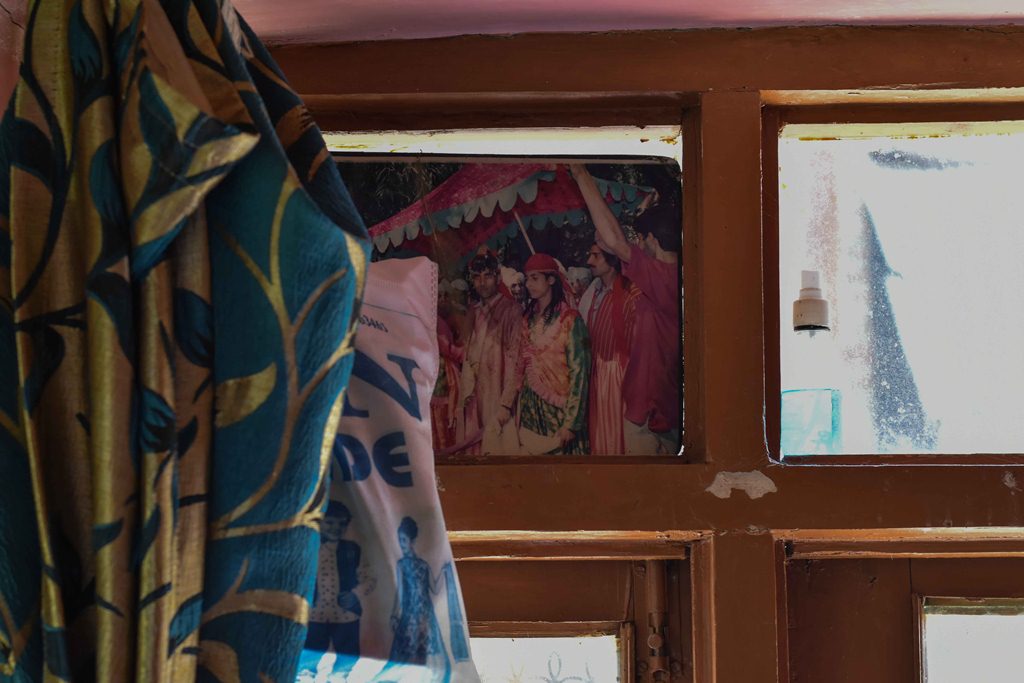
The past reflection. [FPK Photo/Amir Bin Rafi.]
During the Hindu period, the people used to practice this artform in their Bodh Ghar (Hindu temples). Baand-e-Pather was considered as a part of worship to showcase peoples’ love and devotion to their “Devi Devta” (gods and goddesses) as well as to enhance the richness of Kashmiri culture.
With Islam’s advent in the valley, the reverted natives practiced the play in the shrines of their Sufis. The hallowed act, Aijaz says, was to shower love and respect upon the mentors with full faith and Aqidah (belief).

The script of the play. [FPK Photo/Amir Bin Rafi.]
Baand-e-Pather also holds a great relevance to the social development and contemporary issues of the society. The level of entertainment and awareness it provided to distressed people through storytelling was its main goal, says Aajiz. “People would forget about their worries for a time being while enjoying our show.”
Baands entertain the spectators by giving a valuable piece of information in a very subtle, simple and sarcastic manner.
The folk-play is a comment on various social, environmental, political and developmental issues—such as deforestation, corruption, unjust acts of exploitation, trophy hunting, dowry, adaptive behaviour, hunger and so on which had an effective impact on people.
Because of its no-jargon-barrier advantage, Aijaz says, people in earlier times were able to connect themselves to the performance. Back then, the pervasive illiteracy would keep people in dark about some social issues.
“Baand-e-Pathar was the only way of communication to reach masses during the early times in Kashmir which was even used by the ruling parties itself to promote peaceful and comprehensive societies for tenable evolution,” says Aijaz, who’s part of National Baand Theatre in Wathura.
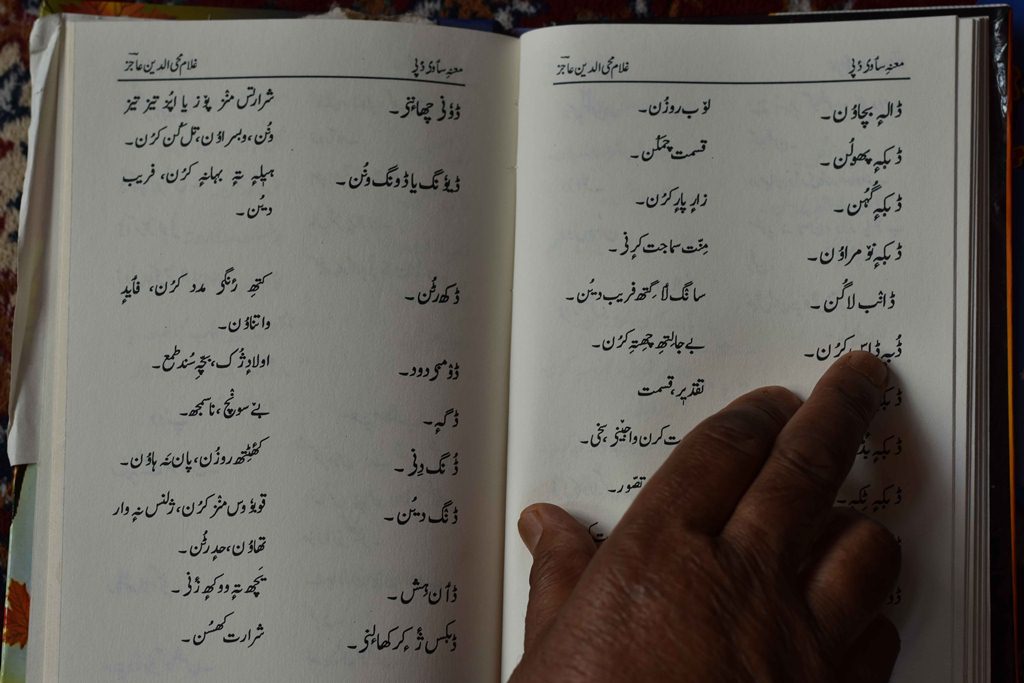
The waned verses. [FPK Photo/Amir Bin Rafi.]
Back in the time when sanctums started seeing the growing footfall of the distressed lots, Baands assumed a significant role in the society. The platonic-proximity and faith-healing of these shrines is what made the devotees’ belief strong, the veteran says, while scratching his forehead with his index finger.
“There’s a reason behind Kashmir’s faithful landscape,” Aijaz says. “Whenever there was a threat of any Naaghani Balai (natural calamity), the Maskhars on community request were made to perform some special rituals. The practice was done by sprinkling water on a dry patch of land in every shrine followed by a special prayer called as Baand-e-dua-e-khair (prayer of the baands) which never went unanswered.”
The prayers practiced by Maskhars wouldn’t discriminate between Muslims, Hindus, Sikhs or others, the folk-artist says. “The practice of Baand-e-Pather is secular in nature. It always works for the welfare of society.”
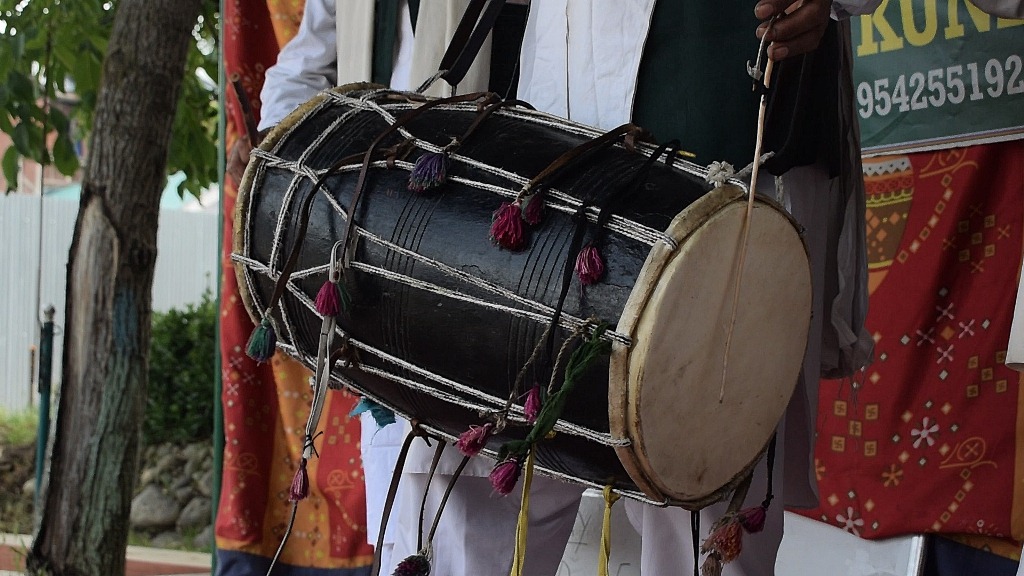
Drumming act. [FPK Photo/Muzammil Bashir.]
In fact, Kashmir’s patron saint, Sheikh-ul-Alam (RA), mentions the art-form in one of his celebrated couplets:
“Yus haiye tuhunde bartal zaagun,
Tass panin sharbat paane chaavey
Chis pather beon beon ti kunie maagun
Yass su toethe ad sui traavey”
“Nund Reshi’s kalam,” Aijaz says, “clearly reflects the history and the hallowed nature of Baand-e-Pather.”
To sustain this art-form, musical instruments like Taal-e-Hure Thaalej—a circular two-piece brass article—plays a significant syncing part. It’s then followed by Nagara, an instrument in the shape of tabla. It’s also used during the festive harvesting season in Kashmir. It infuses a sense of enthusiasm and energy in the people.
Before the play begins, Nagara player comes in and goes around the performance area in a circular movement, beating his drum. The audience then takes the seat around him. He’s called the Karydar and his action is termed as Kor dyun.
As the space outside the karydar circle gets packed with people, the musical mode changes—with the beat of the kor—and the players make their entry. Adding to it is dhol, one of the oldest instruments of India. Then comes Barag, Tull, Cheret and Surnai.
“These instruments are also being played in various shrines of Kashmir by reputed artists,” Aijaz says, “with Surnai being the sole essential instrument with spiritual significance.”
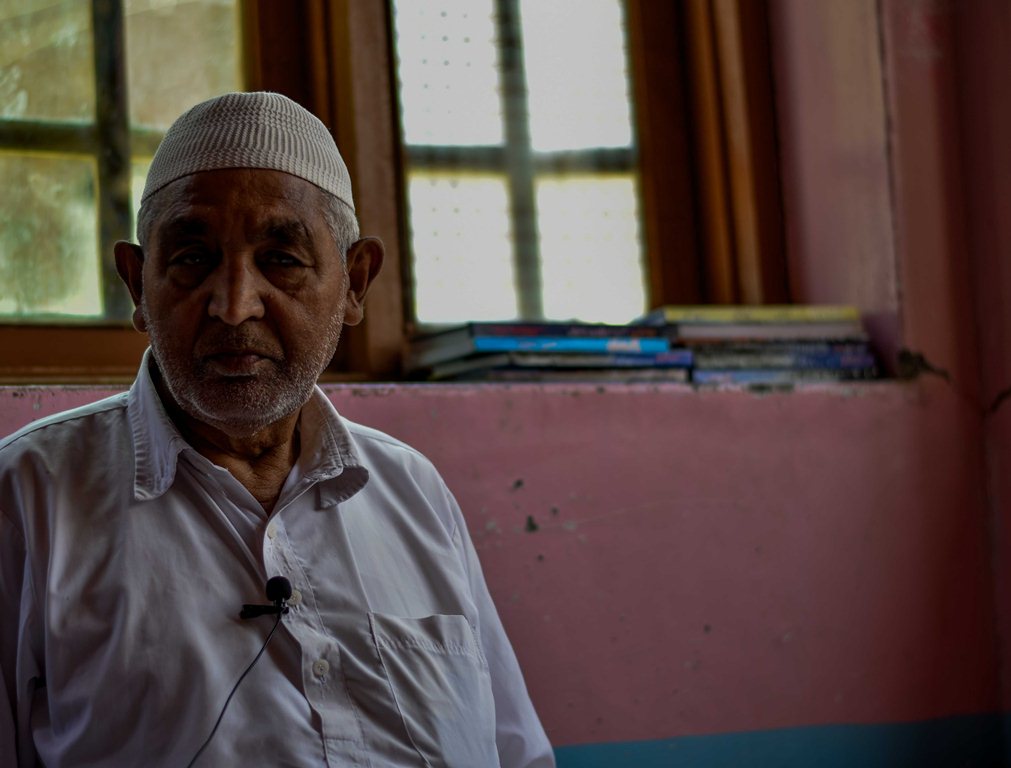
Ghulam Mohiuddin narrating the tale of his tribe. [FPK Photo/Amir Bin Rafi.]
Even though Baand-e-Pather as an artform has largely lost its relevance now, Maskhars, Aijaz says, are ready to entertain people.
“But then the prevailing situation isn’t encouraging us to perform,” the Baand says dolefully, escorted by a surreal silence in the room. “People are suffering in one way or the other and it makes us reluctant to perform blithely.”


